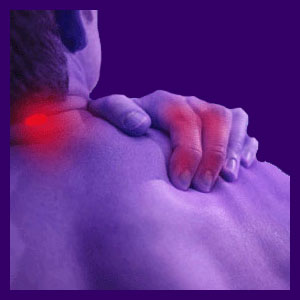
A numb hand is a neurological symptom that is often involved in a variety of neck pain conditions and is typically blamed on one or more pinched nerves in the mid to lower cervical spine. Neuroforaminal stenosis is the medical term used to describe the reduction in the space through which the spinal nerve roots use to egress from the vertebral canal. When these openings lose patency, a compressive neuropathy may develop, leading to a host of problematic symptoms, including the possibility for numbness in the hand. However, there are also other common scenarios that might also cause similar or identical numbness expressions in one or both hands.
The scope of this dialog concentrates on identifying the various conditions that might lead to hand numbness. We will also discuss helpful hints for patients who suffer from this uncomfortable symptom.
Numb Hand Symptoms
When a compressed nerve is responsible for causing numbness in the hand or fingers, the symptomology will typically entail a total and objective lack of sensation. This means that the muscles will demonstrate a lack of neurological signal upon diagnostic testing. The typical consequences of objective numbness include not only deficient sensory capabilities, but also weakness in the affected regions.
Patients with pain, subjective numbness and subjective weakness in the hand are unlikely to be suffering from a pinched nerve, since other explanations make far more sense in these less strictly defined symptomatic expressions. Regardless of the type of numbness expressed, the symptom might be located in certain regions of the hand or may affect the entire hand structure.
Hand Numbness Sources
Many numb hand conditions originate due to compression of a spinal nerve root in the mid to lower cervical spinal region. This might occur due to a herniated disc or osteoarthritic condition impinging on the nerve, as it exits the neuroforaminal opening.
Changes in spinal curvature and vertebral alignment can also trap cervical nerves and cause compression of single or multiple neurological roots.
Central canal stenosis can compress the spinal cord, eliciting a diversity of possible symptoms, including numbness in one or both hands. However, there will usually be many more significant expressions that will ensue from continued cord impingement, making numbness in the hand a relatively minor expression.
Besides nerve compression issues in the spine, there are also many other common causes of numbness in the hand or hands, including structural and psychosomatic conditions:
Thoracic outlet syndrome can create numbness and a host of other disconcerting symptoms throughout the upper body.
Tendonitis and carpal tunnel syndrome can also create localized numbness in the hands in some cases.
Diabetes, and other disease processes, can enact numbness and other symptoms virtually anywhere in the body, but are known to strike the hands, feet, fingers and toes.
Psychologically-induced ischemia is one of the most common reasons for subjective numbness in the hands, especially when experienced with other symptoms, such as pain and tingling.
Numb Hand Assistance
Be very careful about entering into a long-term treatment program, or undergoing any drastic surgery, for a suspected nerve compression issue in your neck or upper back. Many of these conditions are misdiagnosed, when all along, there is some other structural, disease-related or ischemic process enacting the numbness. This is especially true if the symptoms do not exactly match the clinical expectations of the diagnosis. To understand this aspect, I recommend researching your condition carefully and learning all you can. Take an active part in you own care and you will have a far better chance for successful resolution of your numbness concerns.
Remember, when it comes to pinched nerves, the location of the symptoms should correlate exactly to the anatomical location served by the affected neurological root.
We see many instances where a suspected pinched nerve is blamed on a cervical disc protrusion, yet the symptoms were located in areas of the arm and hand that are not innervated by the affected nerve tissue. Watch out for such common diagnostic inconsistencies and you will better your chances for successful treatment.





